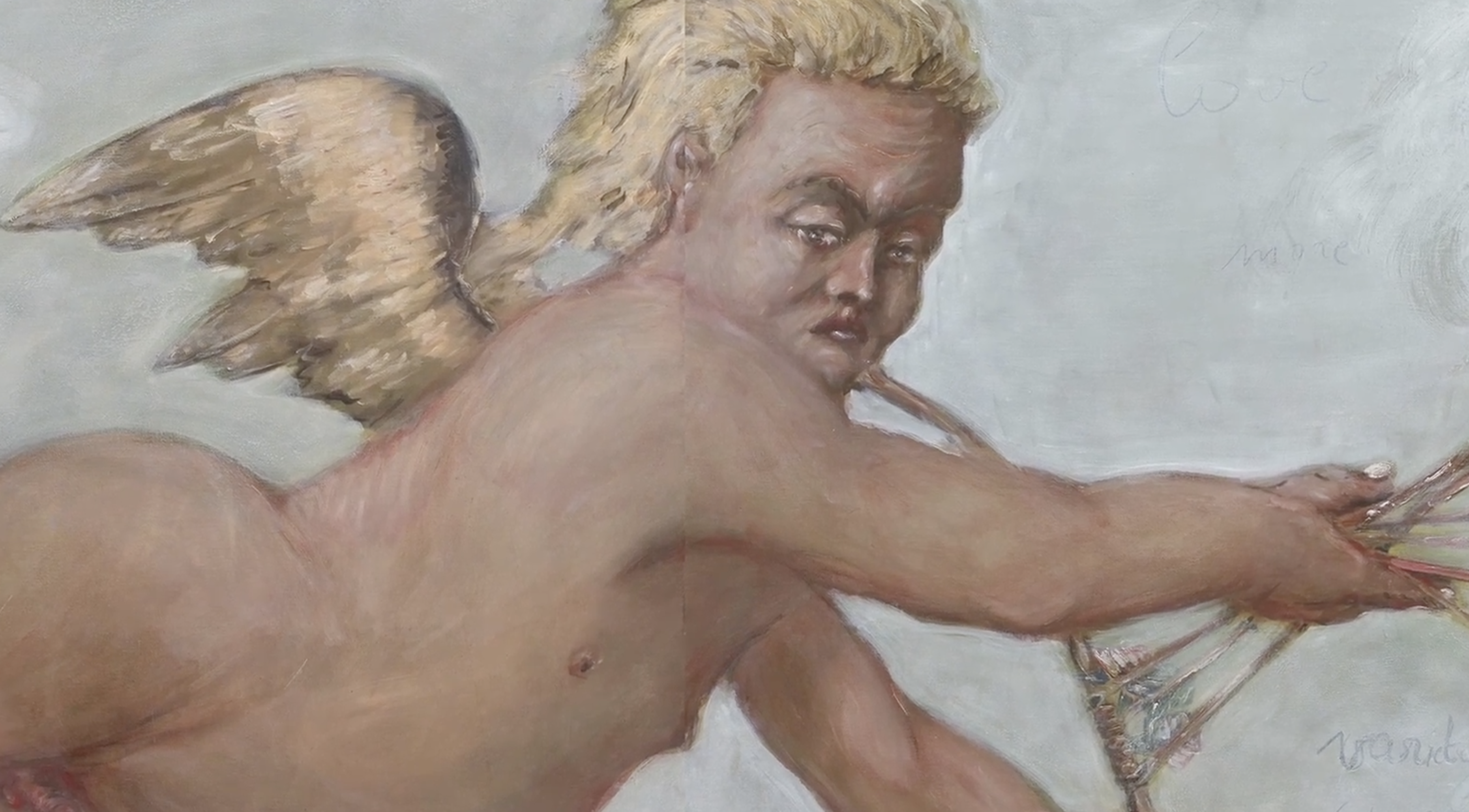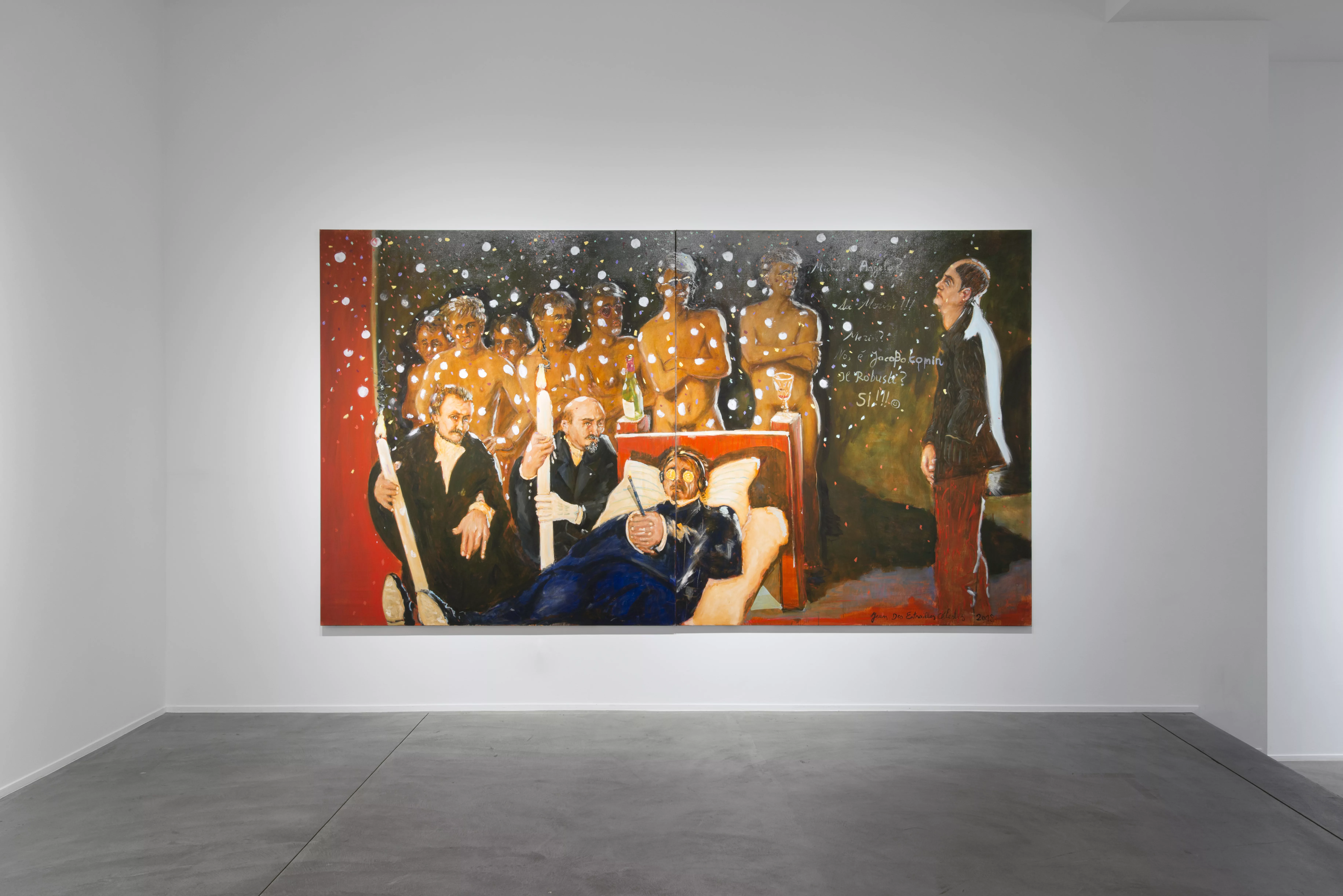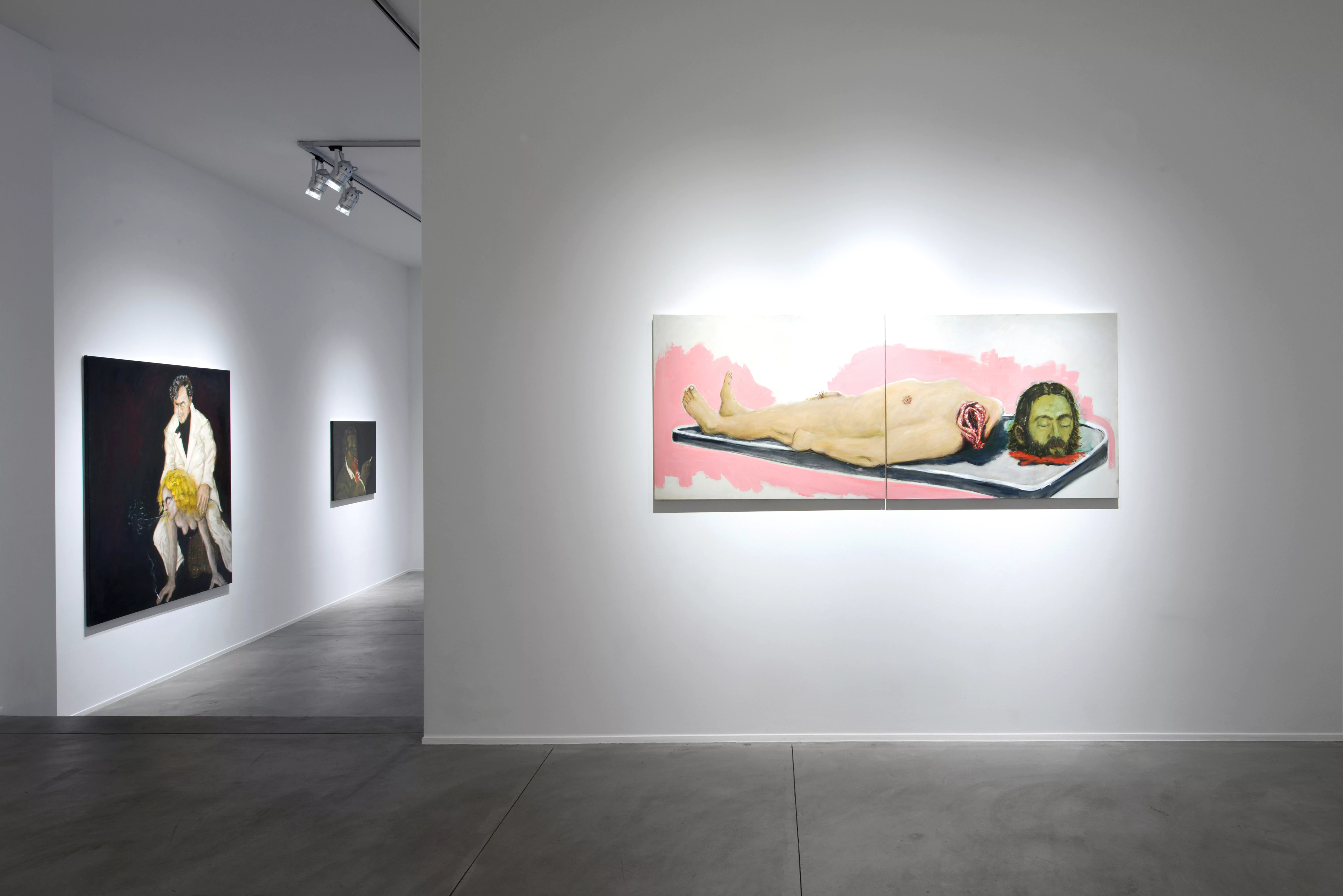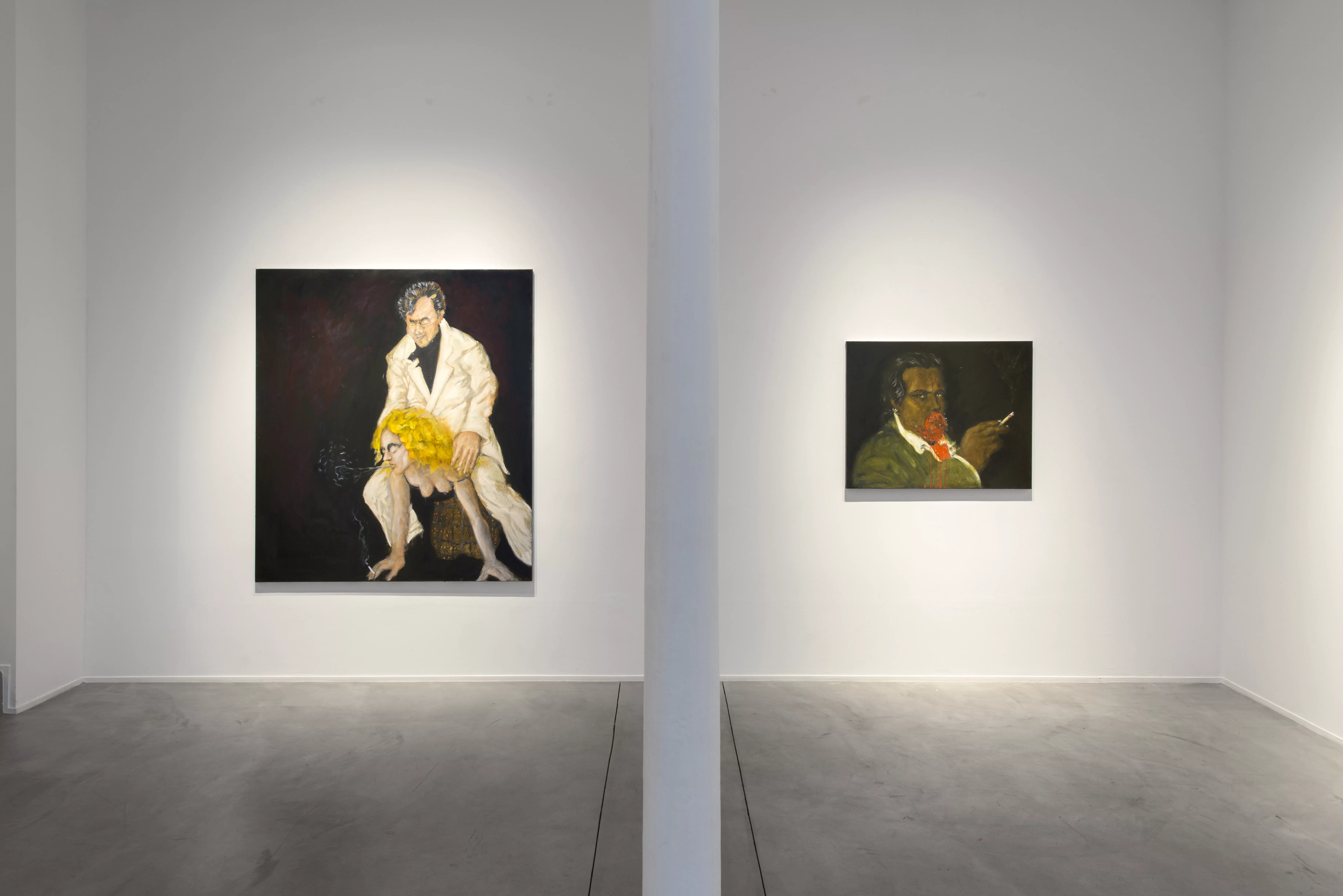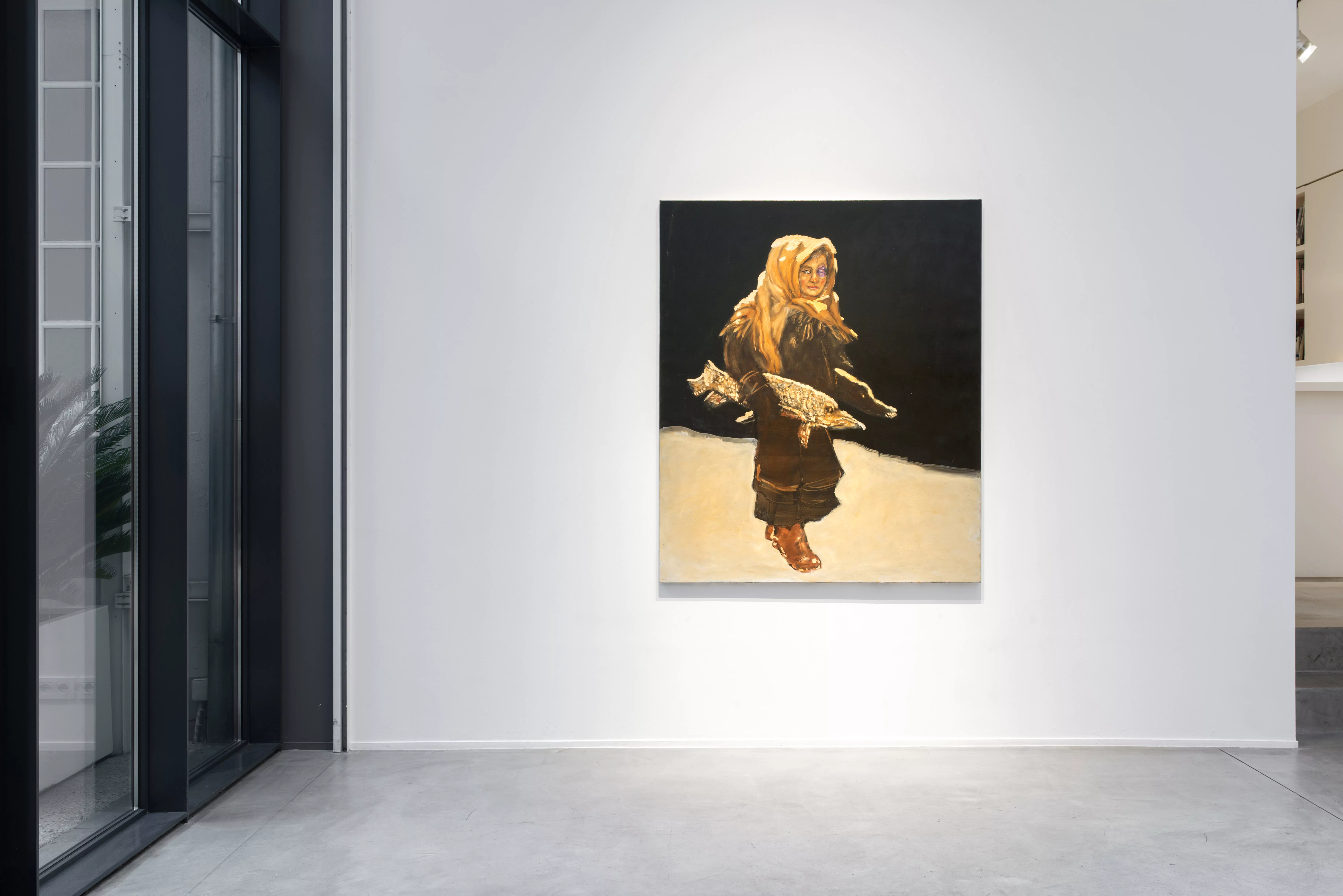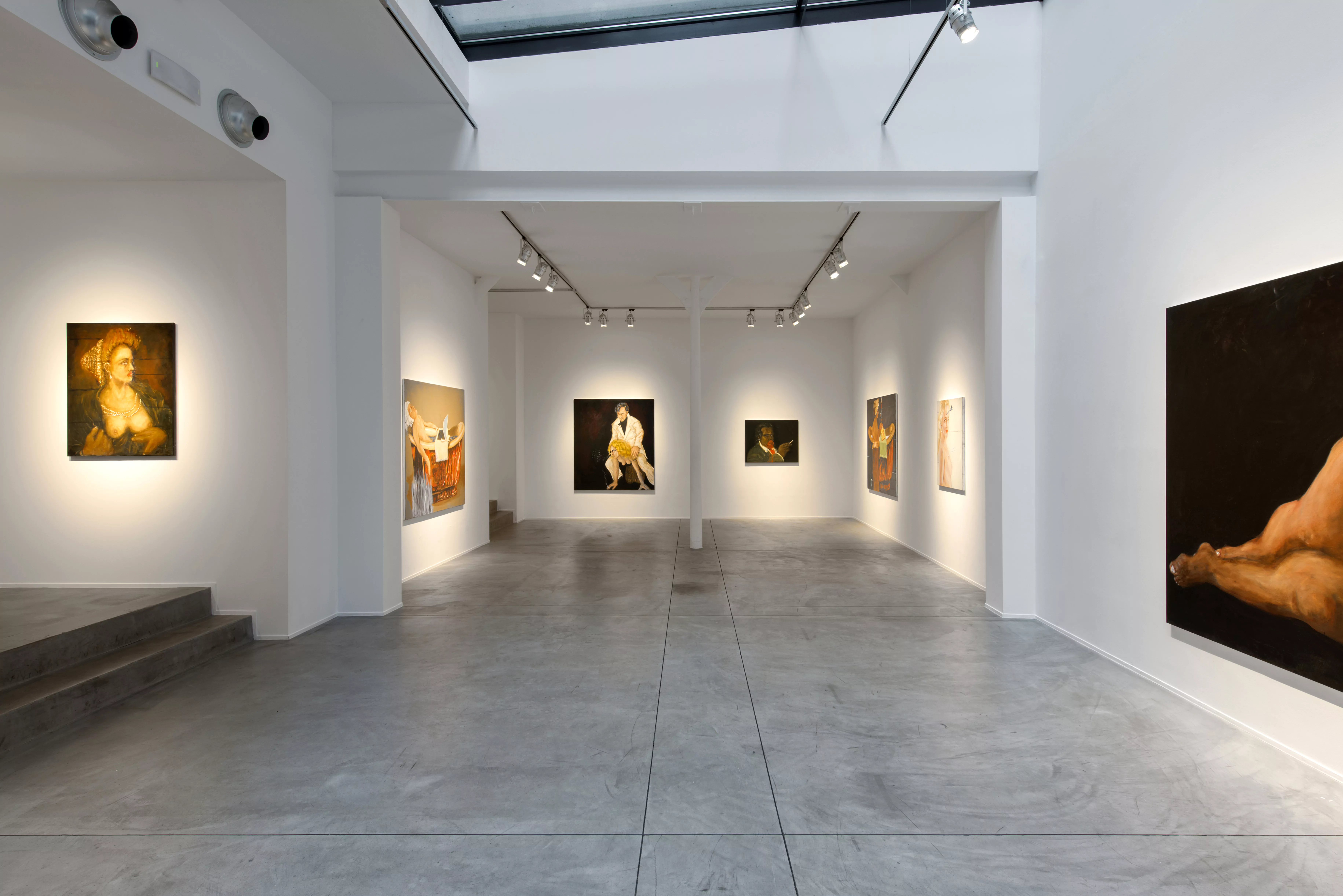
Jan Van Imschoot
Amore Dormiente
Galerie Templon is holding the second solo exhibition of Jan Van Imschoot’s work in Brussels. The cinematic painter and self-proclaimed master of anarcho-baroque is back in Belgium with a brand new series influenced by Caravaggio.
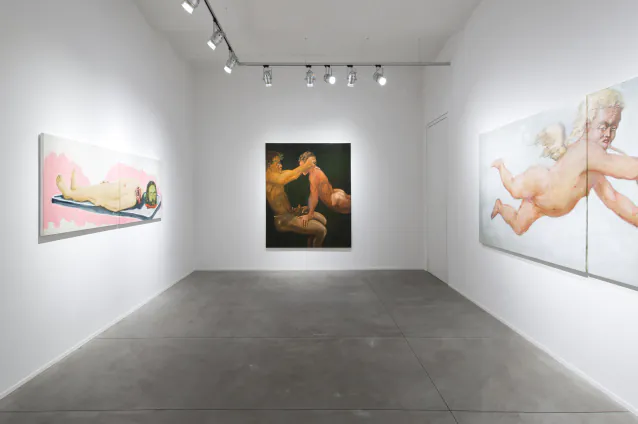
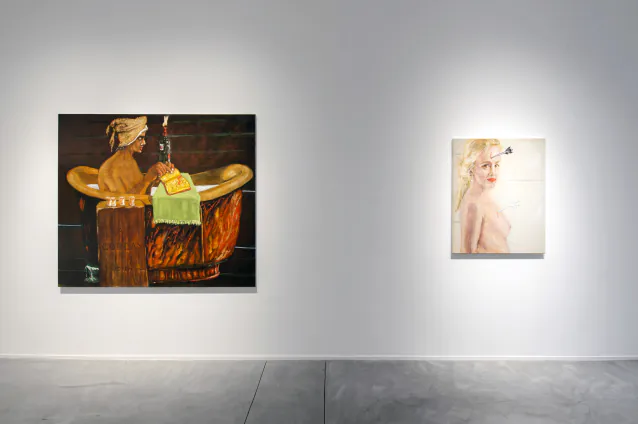
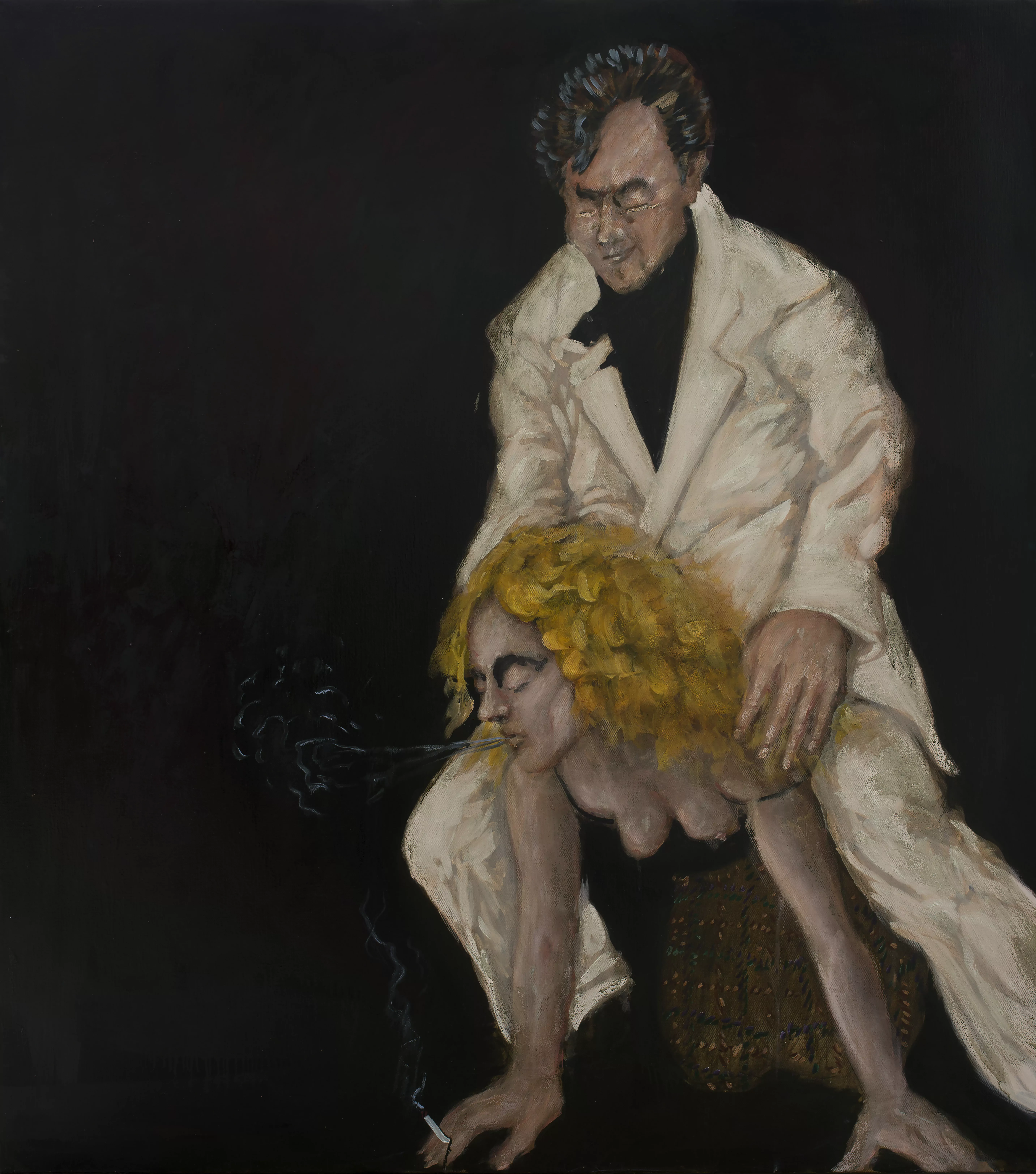
I’m a child of painting and of cinema, a Flemish painter and a Latino-Belgian surrealist, with language and images as my partners. Thank you Rik Wouters, thank you René, thank you Marcel’ explains the artist, who constantly questions the potential of painting.
In Amore Dormiente, Jan Van Imschoot tackles themes such as love, sexual desire, lust and vengeance with black backgrounds and flamboyant colours, naked bodies in motion and powerful gestures.
Freed from the academic straitjacket of the art world imposed by the ‘undertakers’, Van Imschoot creates an extraordinary body of work with expressive blocks of colours, where autobiographical, symbolic and historical references rub shoulders in radical and phantasmagorical canvases inhabited by dwarfs, angels, lovers and the dying.
‘There is no masterpiece in existence where extremes do not crave each other. There can be no hell without heaven; no body without a soul; no love without complacency. Do we ever shed these core beliefs?’ enquires the artist.
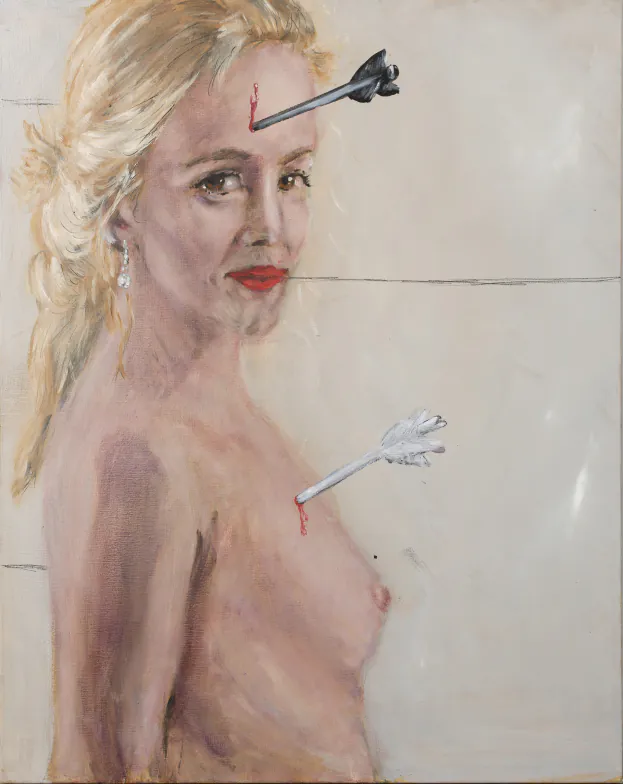
Daphné ou la vengeance de l’amour
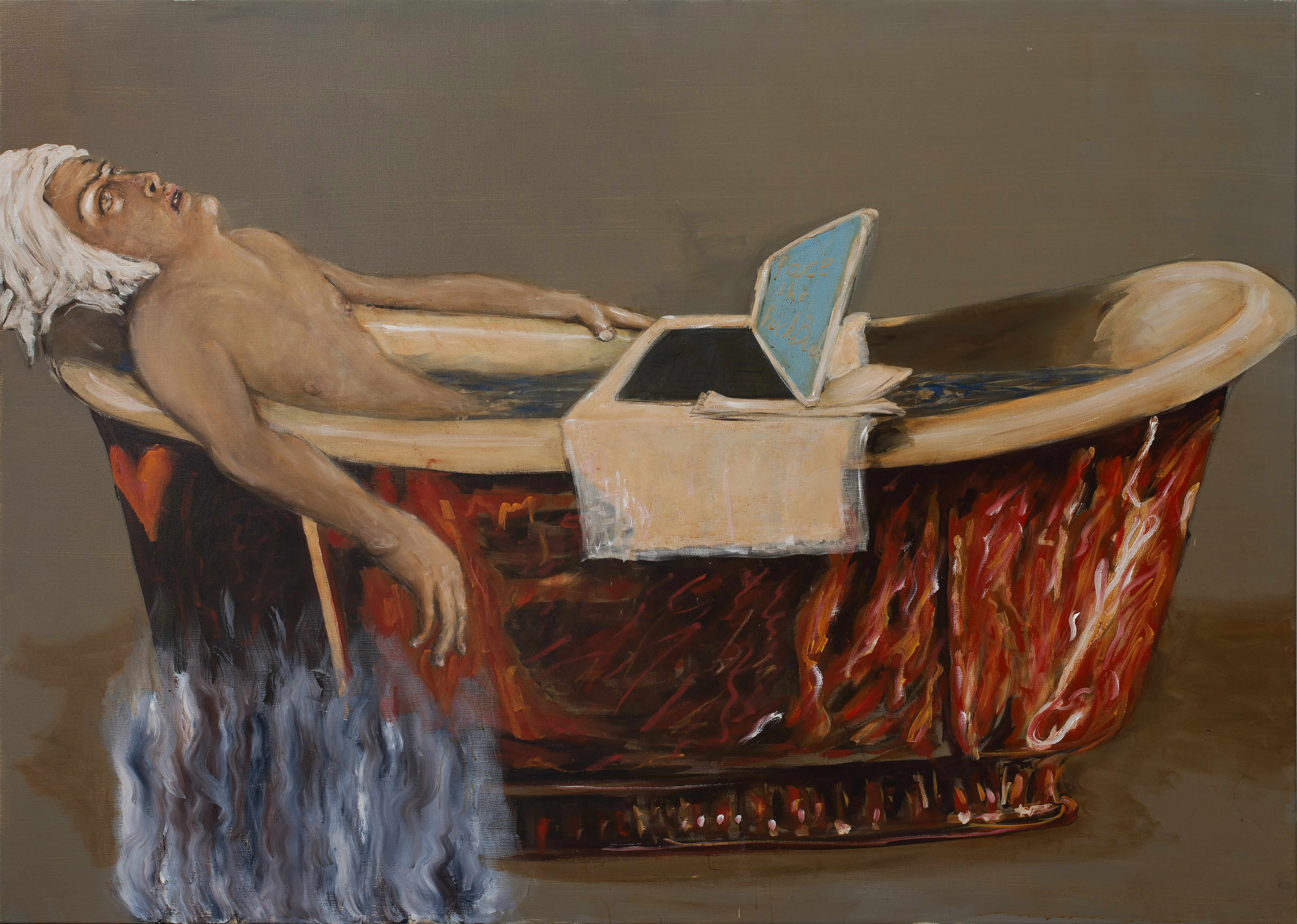
The artist
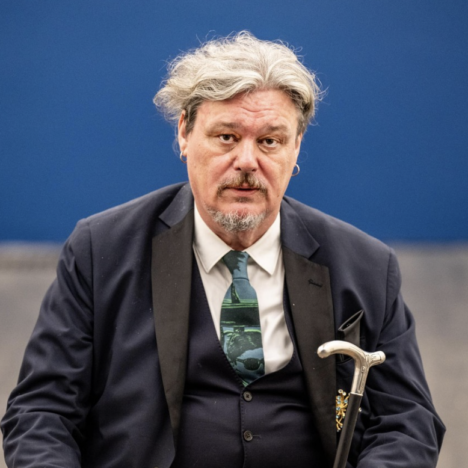
Born in 1963 in Ghent, Jan Van Imschoot has been living and working in France since 2013. Jan Van Imschoot’s exploration of the possibilities offered by painting have resulted in a body of work that draws its power from highly critical and dramatic themes and contains references to countless artists, from Tintoret to Luc Tuymans, Goya to Matisse. Jan Van Imschoot places his figures, decors and narratives at History’s margins, using assembled perspectives, strong tones, bodies in motion and brushwork he describes as ‘anarcho-baroque’. His work delves into a number of recurring motifs: freedom, censorship and the violence of political and ideological systems.
